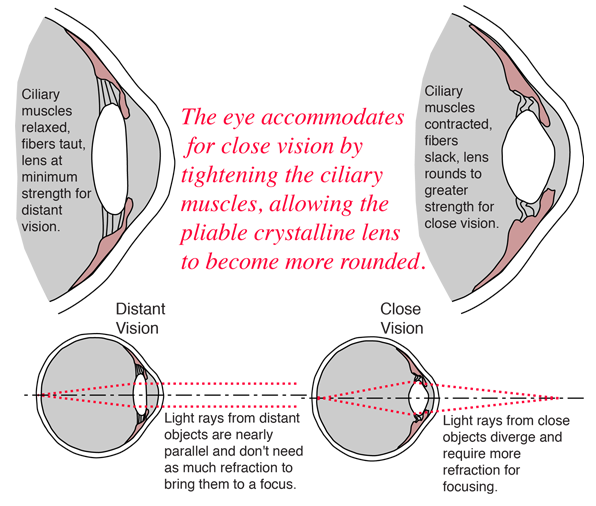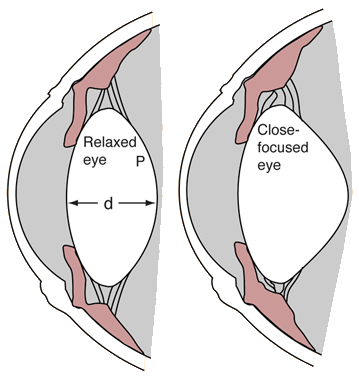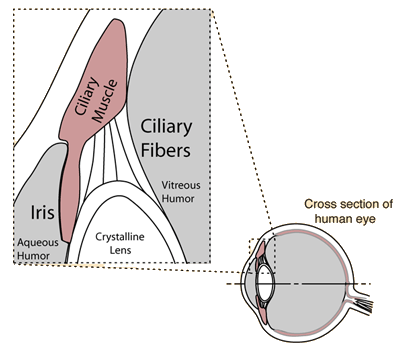Accommodation

When the eye is relaxed and the interior lens is the least rounded, the lens has its maximum focal length for distant viewing . As the muscle tension around the ring of muscle is increased and the supporting fibers are thereby loosened, the interior lens rounds out to its minimum focal length..
| Vision defects | Accommodation model from scale-model eye |
| Role of ciliary muscles and fibers | Range of accommodation |
| Accommodation in animal eyes |
Vision concepts
| HyperPhysics***** Light and Vision | R Nave |


